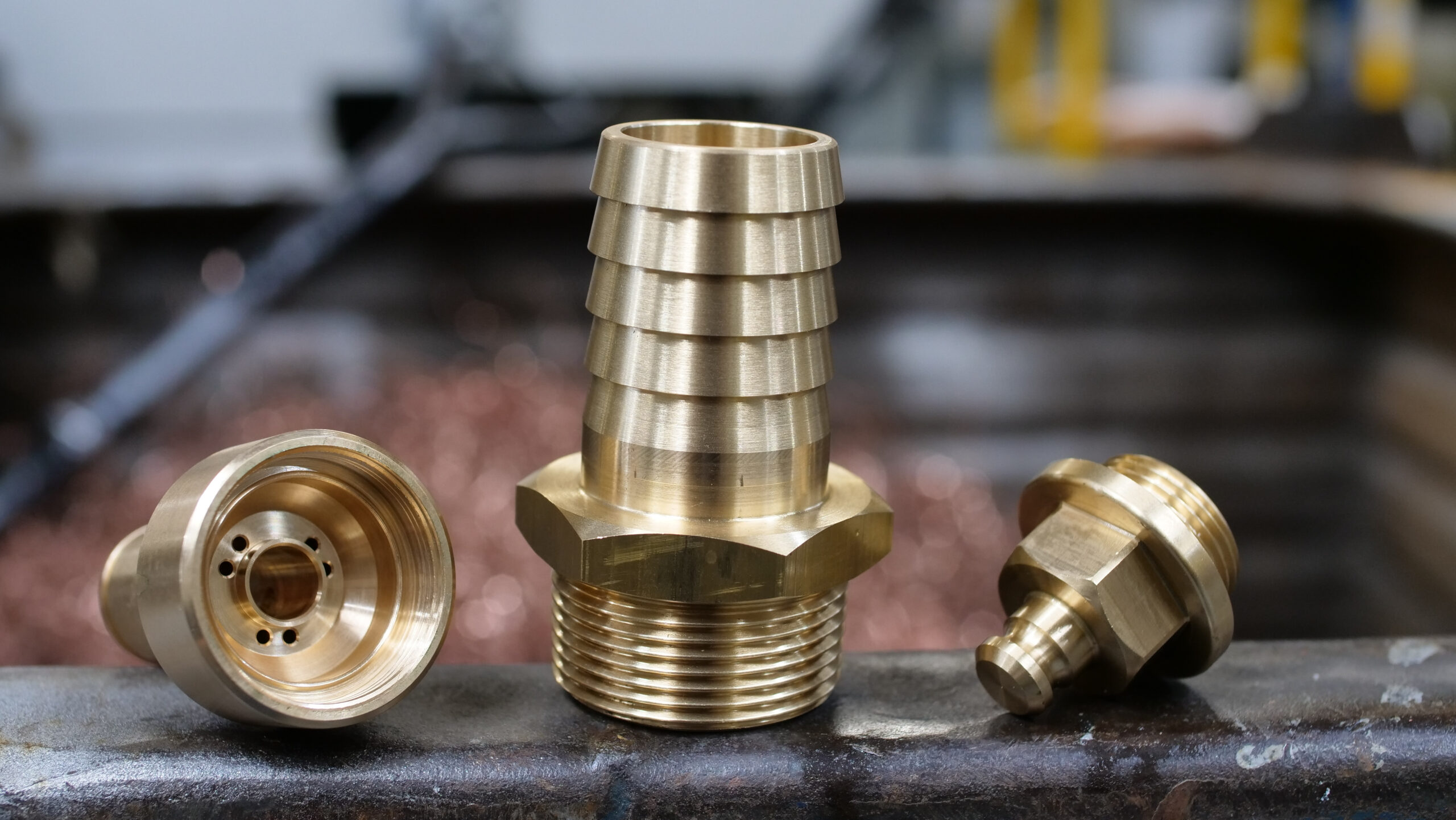
If you work within the water industry, you may have heard the term ‘dezincification’. While its occurrence may seem obvious from scientific standpoint, its effect on brass water fittings can be seriously detrimental.
Dezincification poses significant problems for manufacturers of brass water fittings and end users alike. So, what exactly is it and what can be done to lessen its effects?
What is dezincification?
Dezincification is a process that causes zinc alloys, such as brass, to break down in water over time. Brass is composed of around two-thirds copper and one-third zinc, along with traces of other alloying elements, such as tin, iron, and manganese.
During dezincification, zinc is unintentionally removed from the brass alloy through a corrosive reaction to water or moisture.
After a period operating in wet conditions, enough zinc can leach from the brass alloy that it compromises a brass component’s integrity, leaving a weakened honeycomb-like structure that’s unfit for purpose.
Does dezincification cause brass to rust?
Although it is not rust as we traditionally understand it (only iron can rust), dezincification has a similar corrosive effect on brass alloy components, compromising their internal structure and diminishing strength.
It can be hard to spot dezincified brass – unlike rust with its notable colour and texture. Dezincified brass components often remain unchanged on the outside, aside from minor discoloration, and will usually retain their original shape and dimensions.
But the increased porosity of the brass alloy and dramatic reduction in mechanical strength of the component will often result in catastrophic failure.
Why does dezincification cause brass corrosion?
This reactivity of brass in water will surprise many people; brass fittings are a commonplace favourite in the water industry, so why use them if dezincification is an issue?
The truth is that, although dezincification is a serious consideration when choosing brass water fittings, certain environmental factors must be at play for it to occur. These include:
- Slightly acidic water in the system
- Slightly alkaline water in the system
- Low aeration of the water
- Higher water temperatures
- The effects of Noble metals and the Galvanic Series
A good example of this is within hot water cylinders, where brass fittings can be subject to varying water conditions and temperatures. For this reason, brass fittings used in the construction of hot water cylinders must be carefully selected to minimise the risk of dezincification of vital components.
The Galvanic Series and Galvanic corrosion (the science bit)
The Galvanic Series is an article in its own right, but it’s worth summarising its effects here as it offers some insight into how dezincification occurs and why it causes brass water fittings to corrode.
Galvanic corrosion happens when two dissimilar metals are joined and immersed in an electrolyte; in this case, the two dissimilar metals are copper and zinc (in the form of brass), and the electrolyte is water. This Galvanic reaction is the same principle that makes batteries, or corrosion cells, work.
Within a corrosion cell there needs to be an anode, a cathode, a metallic path, and an electrolyte. The more noble metal acts as the cathode and the less noble acts as the anode, with the anode corroding in preference to the cathode.
Copper is not particularly high on the noble scale – in fact, it’s pretty much in the middle. Zinc, however, is almost the least noble metal, so the gap between copper and zinc is significant. When a brass alloy component is subjected to an electrolyte and forms a metallic path, the zinc element becomes the anode and corrodes in preference to the copper cathode.
The Galvanic reaction is accelerated if the cathode is larger than the anode. This compounds the issue of dezincification in brass hot water cylinder components as the large copper cylinder, which acts as the cathode, is significantly bigger than the small brass fittings containing the zinc, which are the anodes.
Add to this the elevated water temperature within the cylinder and you’ve created the perfect conditions for dezincification of brass fittings.
Why does the water industry use brass fittings if dezincification causes them to corrode?
Despite the issues associated with dezincification, there are lots of good reasons to use brass in the manufacture of water fittings. Brass has:
- One of the best machining properties of all metals
- Great formability for stampings
- Favourable cost per application ratio
- A comparatively easy alloy production process
The key to the successful service application of brass is for the component designer to fully understand the final application of the fittings.
Eliminating the effects of dezincification
To eliminate the effects of dezincification on specialist brass water fittings, the alloying elements of the brass can be modified during its production. This is a relatively low-cost process that greatly improves the brass’ resistance to dezincification and increases the components’ longevity when used in warm, wet conditions such as hot water tanks.
The resultant alloy is called dezincification brass. It’s often referred to as CZ132, DZR brass, or CW602N.
There are two ways to produce DZR brass:
- Use a zinc content of >15%. This automatically prevents dezincification, however, the lower zinc content may make the resulting alloy unsuitable for the intended component or manufacturing requirements.
- If a higher zinc content (typically 35%) is required to preserve the brass’ characteristics, other alloying elements can be added in very small quantities (typically 0.2-2%) to prevent dezincification. These elements are often termed dezincification inhibitors, and include arsenic, nickel, tin, phosphorus, and aluminium.
Another important factor in preventing dezincification of brass fittings is the chosen method of part manufacture. If a forging process, such as hot stamping, is used or another thermal process, such as annealing, the component’s resistance to dezincification is further improved.
However, careful consideration must also be given to what’s right for the component design, its application, and suitable machining processes for producing the part.
There are many factors to consider in the production of brass alloys, but this is a broad overview of the dezincification process and the principles for producing DZR brass fittings for use in the water industry.
In conclusion, if the component designer understands the application and specifies the correct brass alloy, the resulting brass fittings should have a long and trouble-free service life.
Got any questions about specialist water fittings? Get in touch and we’ll be happy to help.



